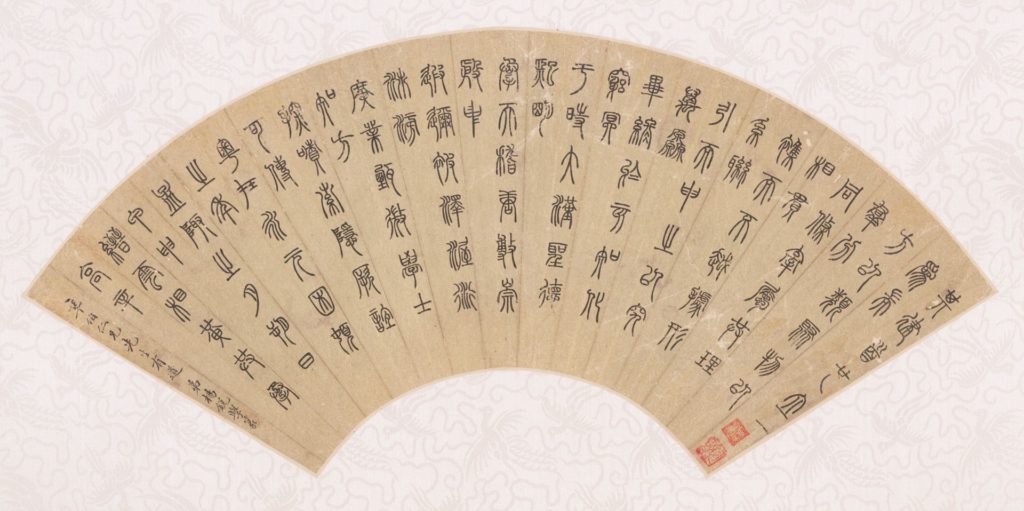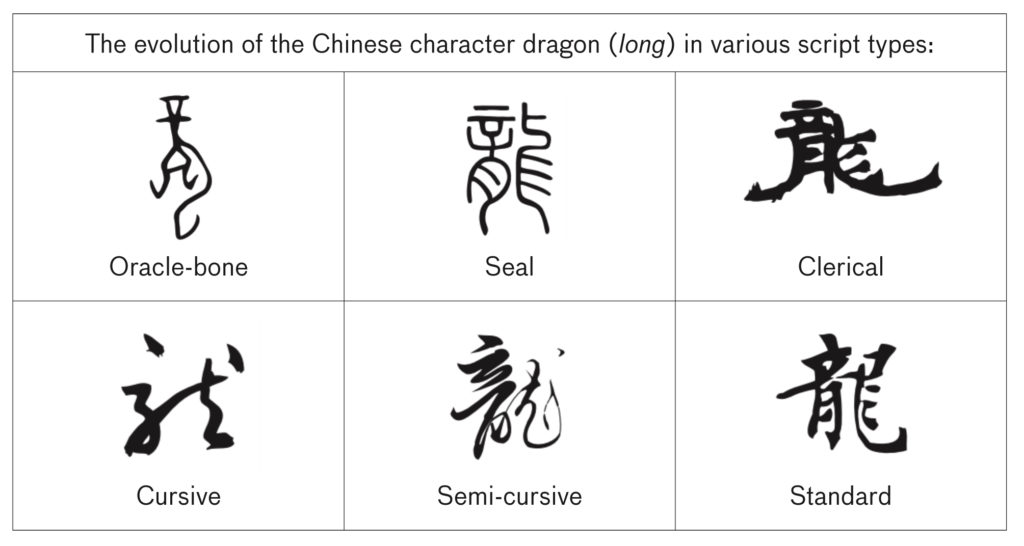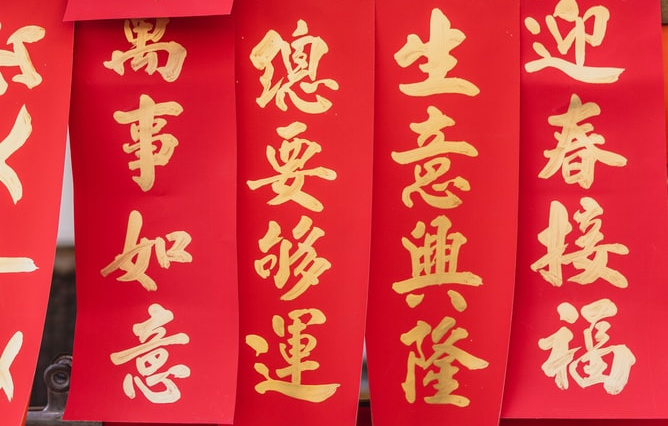Chinese Calligraphy Styles: How to Tell them Apart
Calligraphy has a special status in China, as the Chinese culture is devoted to the power of the written word. Those who had mastered the art of calligraphy would often take up the dominant positions in the government. In the past, the emperors used engraving pronouncements on mountain sides and stones to affirm their authority. Over time, the changes in the materials, tools and government requirements, caused calligraphy to transform. Old styles were pushed aside as new, more modern styles appeared. Eventually, 5 separate scripts developed and are still being used today, each featuring its singularities. Here are some ways you can tell apart different Chinese calligraphy styles.

Calligraphy in Seal Script-type (Zhuan shu) via Yale University Art Gallery
Seal Script (Zhuan Shu)
Seal script, also known as Zuan Shu script is the first known Chinese calligraphy style. It was developed during the Qin Dynasty (221 BC to 206 BC). The style features tall symmetric characters of similar thickness and with a height to width ratio of 3 to 2, the combination that makes every character appear solid and stable. Vertical strokes are straight and horizontal are flat. Curves, as well as circles, appear smooth not rugged, and spacing is carefully designed.
Check our upcoming events selected for you:
The style was created for engraving into different materials, which is why you can see a lot of jades and ritual bronze vessels decorated with the seal script. Although it uses ancient symbols that may be difficult for some to read, this script is still popular today. It is especially popular among seals with name chops.
Clerical Script (Li Shu)
The clerical style of Chinese calligraphy got its name from Cheng Miao, a prison official of the Ching dynasty, who used it while working in prison. The clerical script was used by low ranking officials for prompt operations. Since speed was of importance, the calligraphers would simplify the strokes, and bend the characters instead of making a round turn. The important factor in the creation of the style is spacing that was carefully arranged to give the script an elegant note.
Unlike the seal script, here the edges are squared and curves straighten. The script is characterised by wavelike horizontal lines, called goose tail. Every character has one goose tail, with the rare exception that contained two goose tails per character. The goose tail is usually placed at the bottom, however, it can also be at the top, if the top horizontal line is the longest. Unlike the seal script where the characters were of the same height, the characters in Li Shu vary in height and are aligned to the top.

Running Script also known as Semi-cursive Script (Xing Shu)
The semi-cursive style, also known as the running script is another style developed during the Han dynasty, almost at the same time as the clerical script. For the first time, calligraphers became less meticulous about the spacing between characters. The characters are allowed to “run into each otherâ€. The change in style is caused by the wider use of paper. Now calligraphers could finally create the majority of their works on paper and not engrave them into hard materials.
The style is considered the most simplified, but this doesn’t necessarily mean that it’s the easiest to read and write. Quite the contrary, due to its abstract nature, running style is considered the most difficult to write. The style allows for maximum freedom, as long as the script follows certain rules. One such rule was the focus on the right side of the script. As the calligraphers moved from the left to the right of the character the style would become more, random and artistic.
During its resurrection during the Tang Dynasty, the two masters Zhang Shui and Huai Shu would create an abstract Kwun Tsao sub-style roughly translated into wild cursive. The two calligraphers had the propensity to write while drunk, therefore, creating a very artistic “art for the art’s sake†style.
Cursive Script (Cao Shu)
The cursive style is also frequently called “grass†or “straw†script, or sometimes even the “mood writing.†It was first established as a rebellion against the restrictive writing rules imposed by the imperial authority. The cursive script (also called Cao Shu) can be written in one stroke, without lifting the brush from the paper. The technique creates a fluid effect, as the characters frequently flow into one another. Strokes are modified or eliminated to enable smooth writing and characters are rounded without angular lines. The very abstract, flowy technique makes the cursive script difficult to read, which is why it is mostly used in literary calligraphy, allowing the artist to express themselves, while it is less common in everyday life.

Regular or Standard Script (Kai Shu)
The regular or standard style is most commonly used in everyday life and is a standard for books and textbooks. Every stroke in a regular script is clear and separate from the others, which makes it distinctive from the running or cursive style, that bring the characters closer together. Unlike the seal script that features tall characters, the characters in the standard style are wider and almost square-like. The Kai Shu standard style features more than twenty different characters, which makes it the style with the largest diversity of characters so far.
Chinese Calligraphy Styles: Where to Start
For Westerners, calligraphy is often difficult to understand. The complicated letters and characters can be so intimidating that they discourage people from learning the Chinese language altogether. But you shouldn’t be frightened by the complicated lines and dots. If you are keen on learning the bases of Chinese calligraphy make sure to join The Beauty of Chinese Characters: Calligraphy Styles and Learning Tips. In this online lesson, our guest speaker Catherine Xiang will give you some useful tips and tricks that will make learning Chinese calligraphy styles easy and fun.
Join our talk on ‘The Beauty of Chinese Characters: Calligraphy Styles and Learning Tips’
Register online today! -> RSVP


Leave a Reply